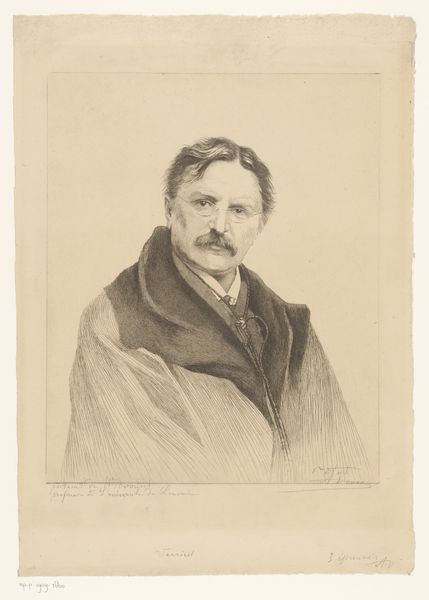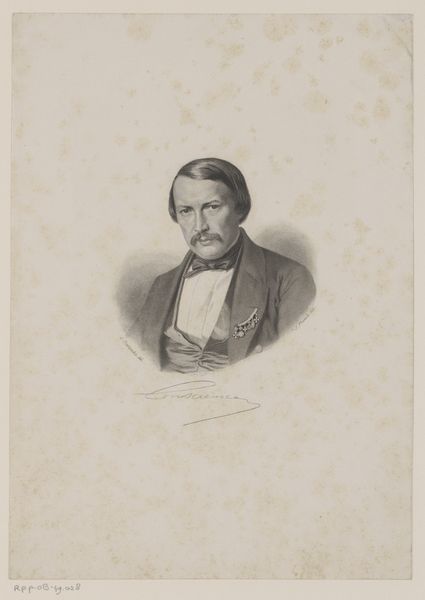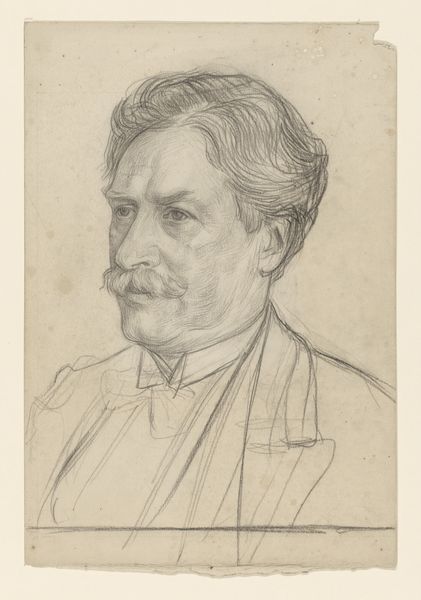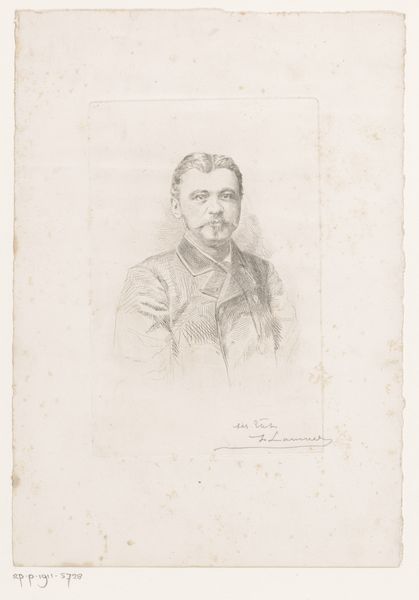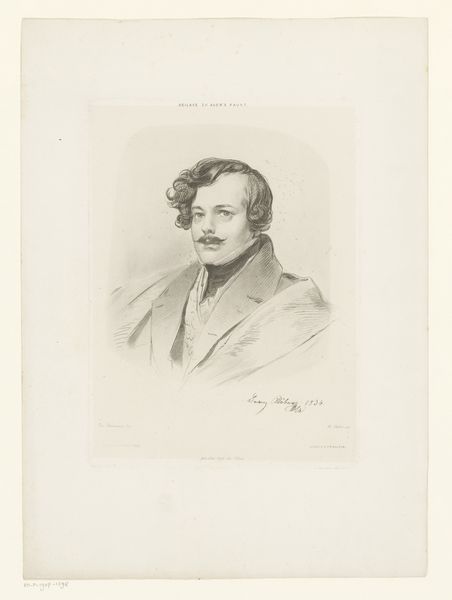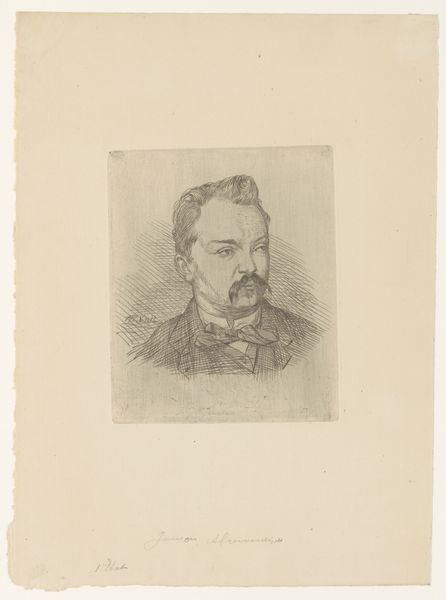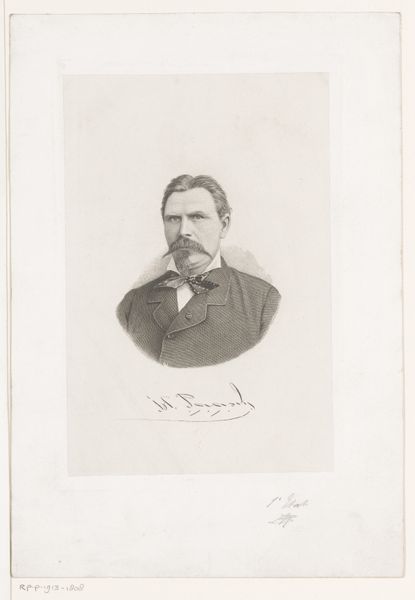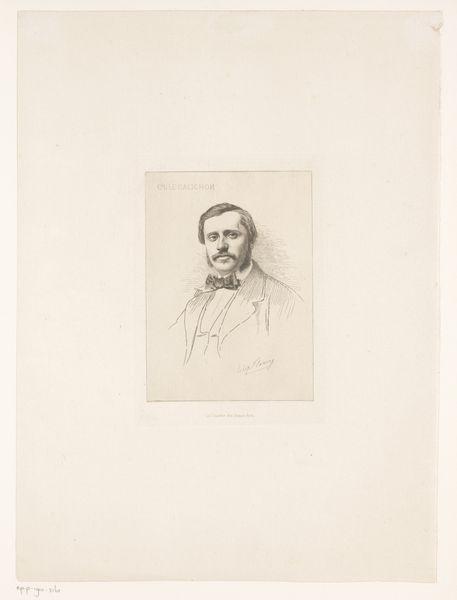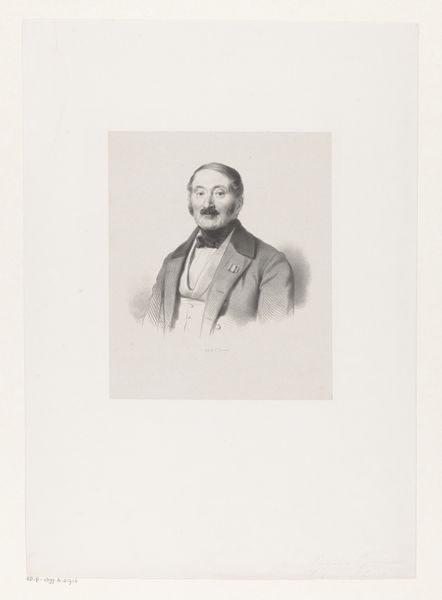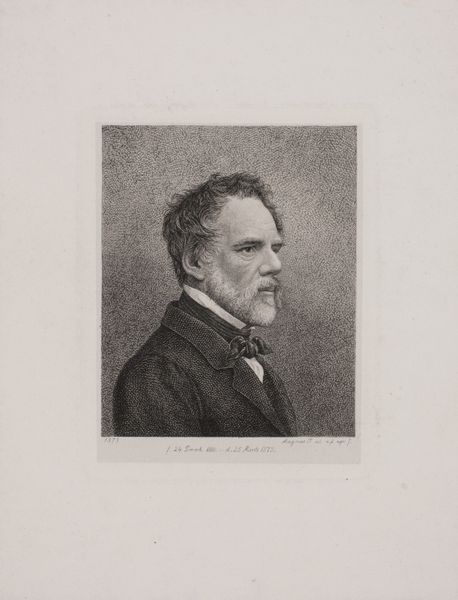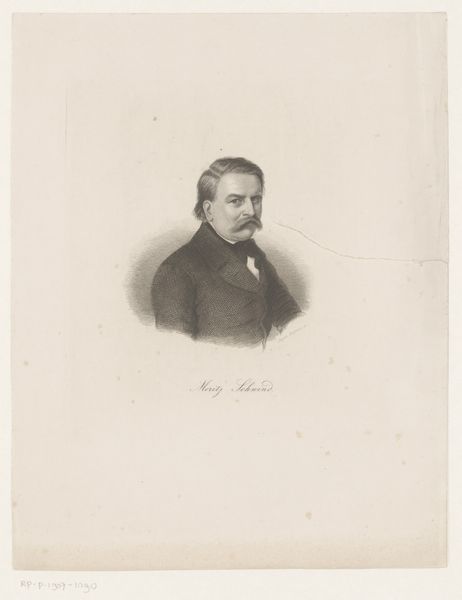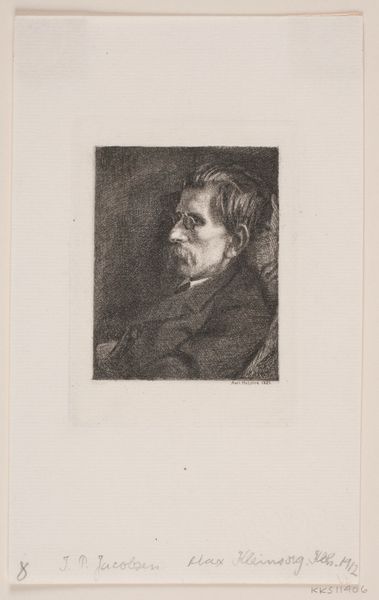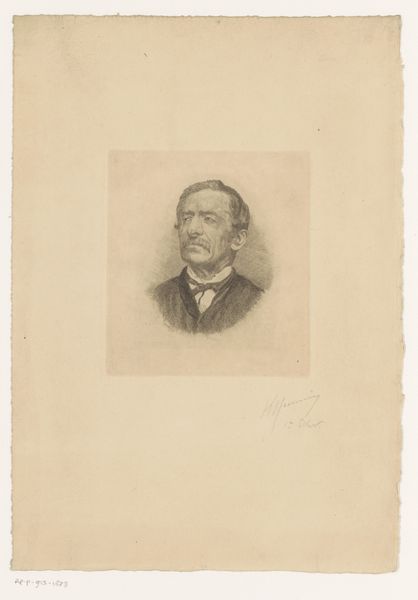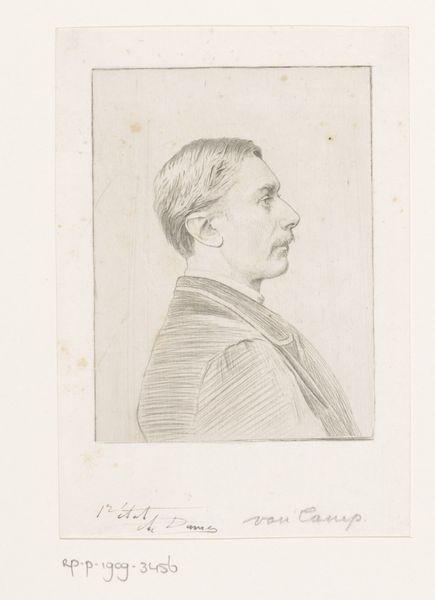
etching, engraving
#
portrait
#
pencil drawn
#
etching
#
pencil sketch
#
charcoal drawing
#
portrait reference
#
pencil drawing
#
portrait drawing
#
academic-art
#
engraving
#
realism
Dimensions: height 415 mm, width 339 mm
Copyright: Rijks Museum: Open Domain
Editor: This is Auguste Danse's "Portret van Gustaaf Verriest," made in 1892. It's an etching, giving it a wonderfully detailed, almost photographic quality. The subject's gaze is really engaging. How do you see this portrait within the context of its time? Curator: Considering this portrait was created in 1892, its existence speaks to the increasing prominence of the middle class and the desire for accessible portraiture. Etchings and engravings made art ownership and image dissemination more democratic than painted portraits, reserved mostly for wealthy elites. How do you think this shift affected public perception of individuals and their importance? Editor: That's fascinating. It suggests a democratizing effect, making portraits less about aristocratic status and more about celebrating individuals from a wider range of backgrounds. But, did it change how artists approached their subjects? Curator: I believe it broadened the scope of representation and arguably challenged traditional artistic hierarchies. With portraits becoming more publicly available, artists could engage with subjects who contributed to the burgeoning intellectual and professional life of the era, figures like Gustaaf Verriest. The very act of memorializing someone through affordable portraiture served to elevate their public role. Does this etching give you any clues about Verriest’s occupation, his contribution to society? Editor: The subtle details, his dignified pose and scholarly spectacles hint at a man of intellect, maybe a writer or a professor? This engraving makes me want to learn about his story and significance in 19th-century society. Curator: Precisely. And in that curiosity lies the enduring power of accessible portraiture; It invites us to consider the social fabric of the past and the individuals who helped weave it. Editor: This discussion reframed my understanding, thinking about the artwork as an object intertwined with evolving societal values. Curator: Mine too, actually; these democratized portraits serve as visual cues reflecting on the emerging significance of various voices.
Comments
No comments
Be the first to comment and join the conversation on the ultimate creative platform.
